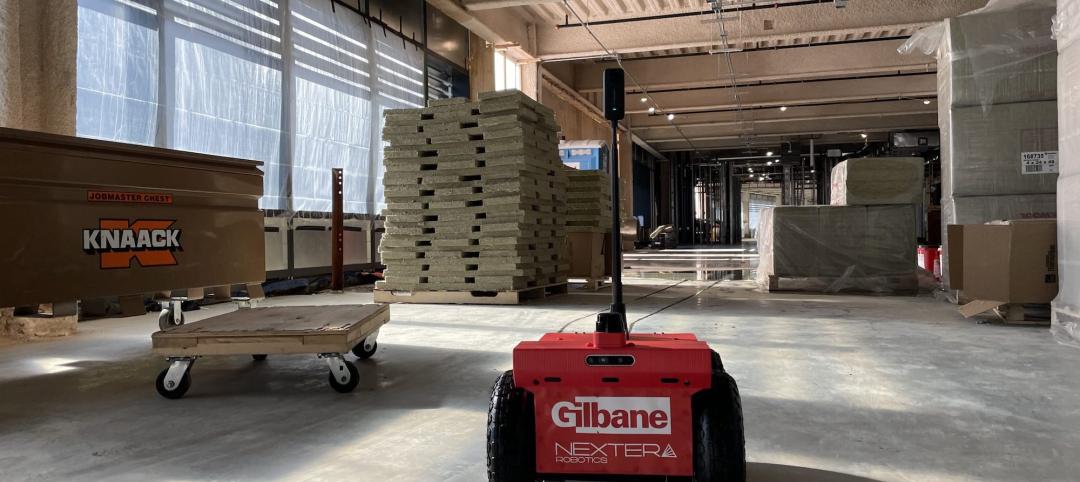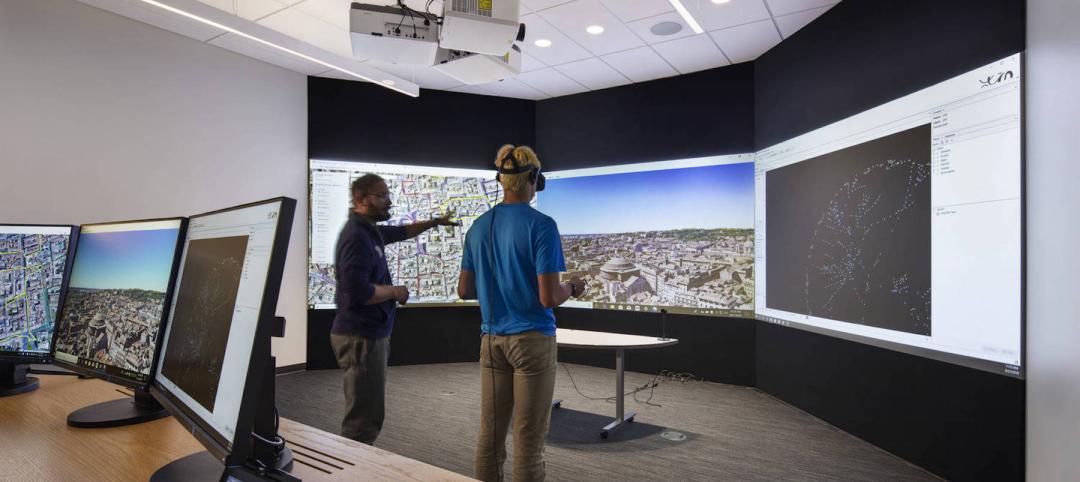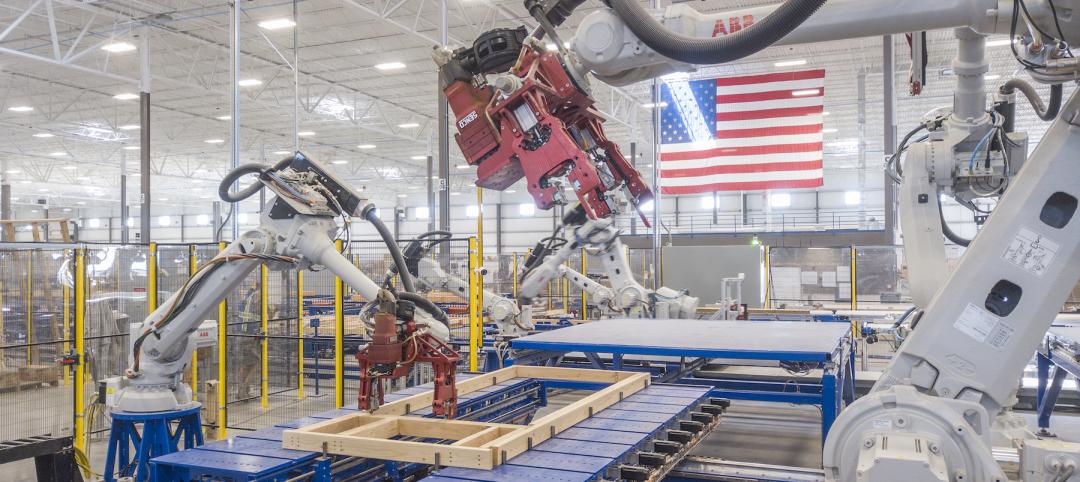One of the roadblocks to collaboration among AEC firms has been the clunkiness of trying to reconcile different modeling and simulation software plug-ins.
Nvidia, a Santa Clara, Calif.-based technology company that designs graphics processing units (GPU) for gaming and professional markets, thinks it’s come up with a solution: Omniverse, which Nvidia describes as the first RTX-based 3D simulation platform that fuses the physical and virtual worlds in real time.
In other words, Onmiverse lets AEC firms using multiple BIM software work together on projects across one platform seamlessly.
Omniverse is based on Pixar’s widely adopted Universal Scene Description (USD), the leading format for universal interchange between 3D applications. About three years ago, Pixar open sourced the entire platform to generate interest from other industries besides animation. Nvidia has built Omniverse on top of USD. The platform uses Nvidia technology such as real-time photorealistic rendering, physics, materials, and interactive workflows between industry-leading 3D software products.
BD+C's The WEEKLY speaks with Wood Bagot's Robert Cervellione and Nvidia's Richard Kerris.
“We can apply multiple GPUs to the platform, and can control how much data gets transferred [during collaboration],” explains Richard Kerris, Nividia’s GM-media and entertainment.
Over 40 firms—included Ericsson, Industrial Light & Magic, and Foster+Partners—and as many as 400 individual creators and developers have been using Omniverse for a year and providing Nvidia with feedback. The platform will go open beta by the end of this year, says Kerris. “We believe this could have huge implications across multiple verticals.” Kerris adds that Nividia hopes Omniverse will be useful for software developers.
OMNIVERSE WILL SAVE USERS VALUABLE TIME
Omniverse’s early adopters include Woods Bagot, the architecture and consulting practice with 13 offices, which is currently exploring the Omniverse platform to have a hybrid cloud workflow for the design of complex models and visualizations of buildings.
Before Omniverse, explains Robert Cervellione, Design Technology Manager for Woods Bagot’s New York studio, “platforms were limited to the software being used.” What makes Omniverse unique, he says, is that the platform can mix such popular plug-ins as Revit, Rhino, and Grasshopper. “Now, we don’t have to spend a lot of time exporting stuff from one plug-in to another. Even a non-technical project manager can see, real time, what’s going on,” says Cervellione.
Woods Bagot is already using Omniverse on several projects it has submitted for competitions. And it’s been testing to make sure that all of the plug-ins remain stable. “It’s such a well-designed system that it takes very little effort to get it to work,” says Cervellione. “It glues everything together.” The next step for his firm, he says, is to roll it out to its offices so that it can be used for live projects.
OMNIVERSE SUPPORTED BY MAJOR SOFTWARE LEADERS
The industry’s major software leaders, including Adobe, Autodesk, Bentley Systems, Robert McNeel & Associates, and SideFX are supporting Omniverse. Blender has been working with Nvidia to add USD capabilities to enable Omniverse integration with its software.
“The importance of our two-year collaboration with NVIDIA cannot be overstated,” says Amy Bunszel, senior vice president for Design and Creation Products at Autodesk. “Projects and teams are becoming increasingly complex and we are confident Autodesk users across all industries will share our enthusiasm for Omniverse’s ability to create a more collaborative and immersive experience. This is what the future of work looks like.”
A complete list of software partners is available at nvidia.com/omniverse.
Related Stories
Giants 400 | Nov 14, 2022
4 emerging trends from BD+C's 2022 Giants 400 Report
Regenerative design, cognitive health, and jobsite robotics highlight the top trends from the 519 design and construction firms that participated in BD+C's 2022 Giants 400 Report.
Contractors | Nov 14, 2022
U.S. construction firms lean on technology to manage growth and weather the pandemic
In 2021, Gilbane Building Company and Nextera Robotics partnered in a joint venture to develop an artificial intelligence platform utilizing a fleet of autonomous mobile robots. The platform, dubbed Didge, is designed to automate construction management, maximize reliability and safety, and minimize operational costs. This was just one of myriad examples over the past 18 months of contractor giants turning to construction technology (ConTech) to gather jobsite data, manage workers and equipment, and smooth the construction process.
Architects | Nov 10, 2022
What’s new at 173 architecture firms for 2022
More than 295 U.S. architecture and architecture-engineering (AE) firms participated in BD+C's 2022 Giants 400 survey. As part of the Giants survey process, participating firms are asked to describe their most impactful firm innovations and noteworthy company moves in the past 12 months. Here is a collection of the most compelling business and project innovations and business moves from the 2022 Architecture Giants.
AEC Tech | Aug 8, 2022
The technology balancing act
As our world reopens from COVID isolation, we are entering back into undefined territory – a form of hybrid existence.
Smart Buildings | Jun 1, 2022
Taking full advantage of smart building technology
Drew Deatherage of Crux Solutions discusses where owners and AEC firms could do better at optimizing smart technology in building design and operations.
BAS and Security | May 26, 2022
Can your intelligent building outsmart hackers?
ESD's security services studio leader Coleman Wolf offers tips, advice, and lessons for protecting real estate assets from cyberattacks.
Architects | Apr 26, 2022
Low-tech skills architects need to keep in a high-tech world
As architects continue to lean into learning and mastering the latest technologies, let us not forget the foundational, fundamental skills that are still expected by clients. RS&H National Design Director Philip Robbie explains.
AEC Tech | Apr 19, 2022
VDC maturity and the key to driving better, more predictable outcomes
While more stakeholders across the AEC value chain embrace the concept of virtual design and construction, what is driving the vastly different results that organizations achieve? The answer lies within an assessment of VDC maturity.
Modular Building | Mar 31, 2022
Rick Murdock’s dream multifamily housing factory
Modular housing leader Rick Murdock had a vision: Why not use robotic systems to automate the production of affordable modular housing? Now that vision is a reality.
AEC Tech Innovation | Mar 9, 2022
Meet Emerge: WSP USA's new AEC tech incubator
Pooja Jain, WSP’s VP-Strategic Innovation, discusses the pilot programs her firm’s new incubator, Emerge, has initiated with four tech startup companies. Jain speaks with BD+C's John Caulfield about the four AEC tech firms to join Cohort 1 of the firm’s incubator.















